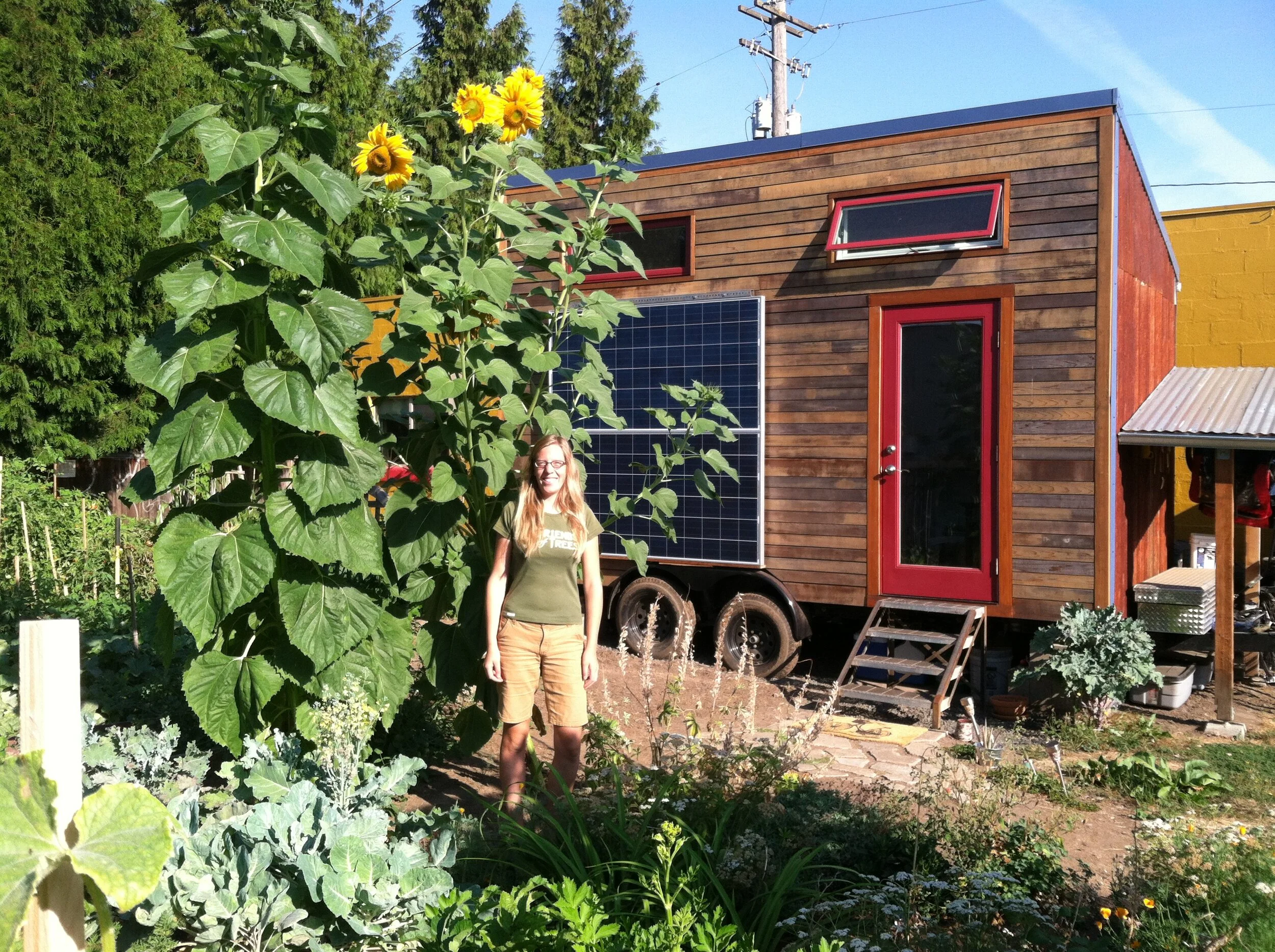The house I live in is over 100 years old. Back then when energy was cheap, homes were built drafty. They had no insulation (not to mention air sealing) and tongue and groove or shiplap siding was installed directly over studs, with tar paper sometimes in between. Windows had only one pane of glass with no special coatings or sealed gases. Homes settle as they age, creating gaps around windows and framing out of plumb and level. Homeowners make alterations to the house to meet their changing needs.
The owners of this home bought it 5 years ago. Since then, they have installed insulation, painted walls, built a new staircase, installed solar electric panels on the roof, and created garden beds in the backyard to name a few things. The current project is a kitchen remodel. Before I moved in, they decided to change out the heating system. Knowing that their house is drafty even with the added insulation (not always great for air sealing in retrofit situations), they wanted something other than the forced air system on the main floor which just moved heat around and out the cracks in the building envelope. They also wanted to remove the expensive electric baseboard heating units in the upstairs bedrooms.
After considering their options, they opted for a radiant floor heating system which would reduce drafts, keep most of the heat around the occupants and run quiet. The system (also known as hydronic heating) they chose for most of the home consists of a new efficient sealed combustion gas water heater which circulates hot water through plastic tubes that heat metal plates installed under the floor. On the main floor, this is the original tongue and groove wood flooring. Upstairs, it is new bamboo flooring. They installed an electric resistance heat system in the bathroom floor which is covered by tile. I LOVE this system! It's very effective in heating a small space and though electricity costs more, the solar electric system helps offset that cost. It's a wonderful feeling to walk on a warm bathroom floor. The wood floors do not have that same feeling partly because tile retains more heat longer due to thermal mass.
So far, I feel like this is an effective heating system for a house that is somewhat drafty. However, if the water heater has a problem, not only do you not have hot water, you also do not have heat. The water heater was sized for Portland's typical climate. This year, we had an unusual cold snap for about 2 weeks where day temps dipped into the 20's and teens. Since the ground temps also dropped, the incoming water was too cold for the water heater to handle heating as it should. I was still able to shower but resorted to space heaters for a few days after spending days in and out of a house with air temperatures in the upper 40's. Luckily, the weather warmed back up and space heating has not been an issue since. Time will tell how the rest of the winter will go.









